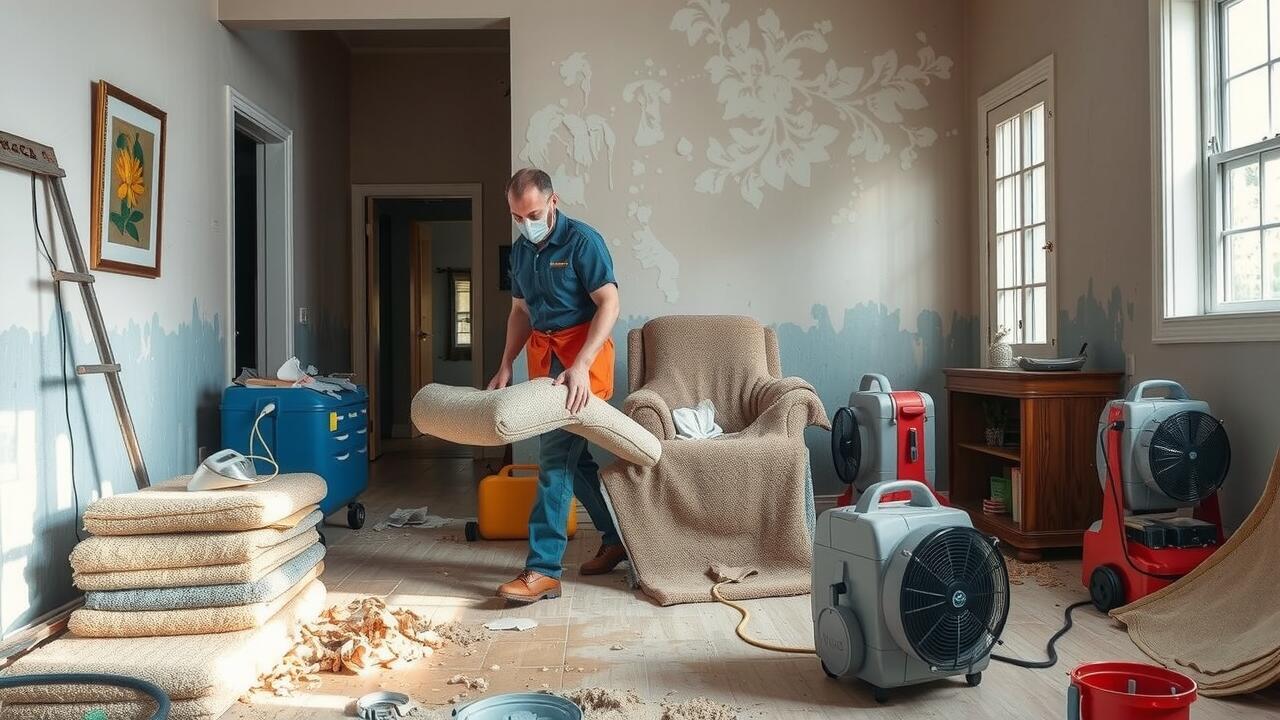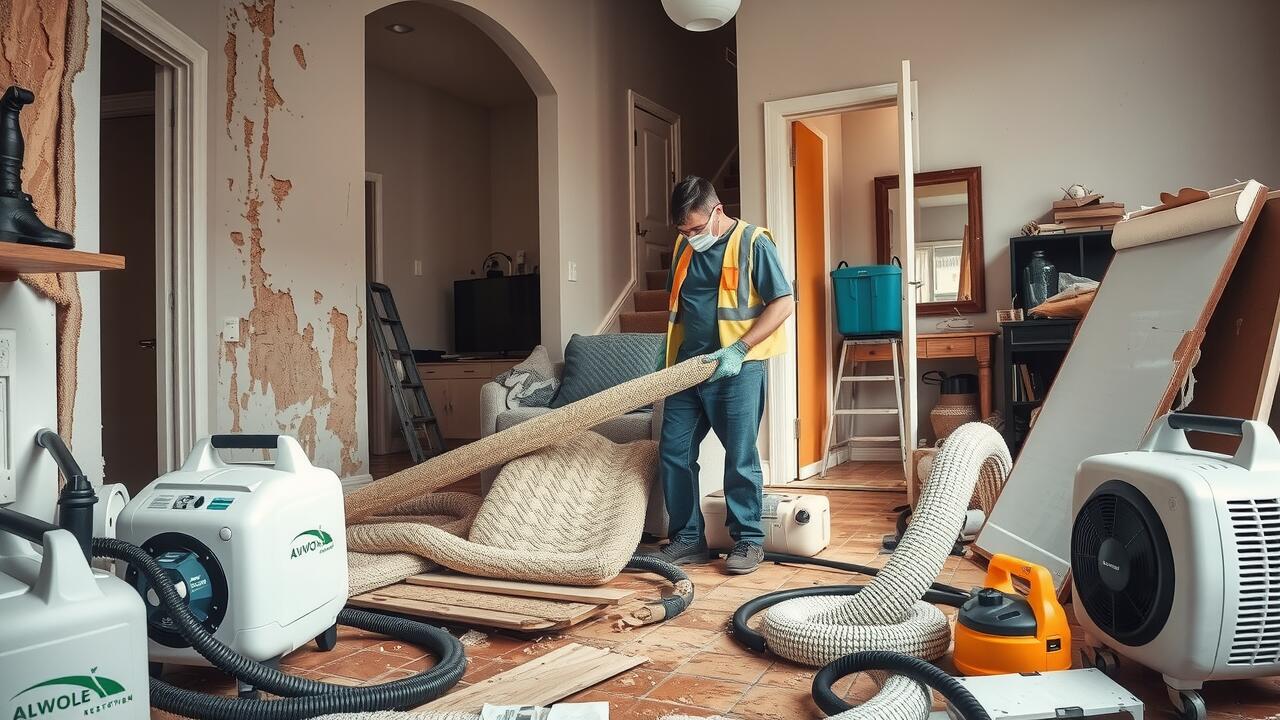
Table Of Contents
The Role of Materials in Mold Development
Certain materials play a significant role in the development of mold after a flood. Porous materials, such as wood and drywall, absorb moisture quickly, creating ideal conditions for mold growth. In contrast, non-porous surfaces, like metal or plastic, resist moisture absorption and are less likely to harbor mold. Understanding these differences is crucial during the flood damage restoration process, as the choice of materials used for repairs can influence the risk of mold resurgence.
The speed at which mold sets in can also depend on other factors, such as temperature and humidity levels. Warm, damp environments are particularly conducive to mold growth. After flood damage restoration, it is essential to dry affected areas thoroughly and promptly to reduce moisture levels. This proactive approach can help mitigate the risk of mold and protect the integrity of the building and the health of its occupants.
Porous vs. Non-Porous Surfaces
Porous surfaces, such as wood, drywall, and carpeting, are particularly susceptible to mold growth after a flood. These materials can absorb moisture quickly, creating an ideal environment for mold spores to thrive. Even after the visible water has been removed, the dampness within these surfaces can promote a rapid colonization of mold, potentially leading to structural damage and health hazards.
Non-porous surfaces, including tiles, metal, and glass, are less likely to support mold growth. While water may pool on these materials, they do not retain moisture as effectively as porous surfaces do. However, it’s still crucial to conduct thorough cleaning and drying of non-porous items following a flood. Flood damage restoration efforts should focus on both types of surfaces to mitigate the risk and prevent long-term consequences associated with mold exposure.
Health Risks Associated with Mold Exposure
Mold exposure poses significant health risks that can affect individuals differently based on their sensitivity and overall health. Common symptoms include respiratory issues, such as coughing and sneezing, as well as skin irritations. Those with pre-existing conditions, like asthma or allergies, may experience aggravated symptoms upon exposure. Furthermore, mold can produce mycotoxins, which are harmful substances that can lead to more severe health problems if inhaled or ingested.
Addressing mold growth promptly after incidents such as flooding is crucial for safeguarding health. Flood damage restoration efforts should focus on thorough drying and cleaning of affected areas to minimize mold growth. Ignoring the presence of mold can lead to chronic health issues over time, underscoring the importance of swift and effective remediation in any flood recovery process.
Symptoms of Mold-Related Health Issues
Exposure to mold can lead to a variety of health issues, particularly for individuals with respiratory conditions, allergies, or weakened immune systems. Common symptoms include sneezing, coughing, eye irritation, and skin rashes. Some people might experience more severe reactions, such as difficulty breathing or asthma attacks. The presence of mold can significantly impact the health of those living in affected environments, making it crucial to address mold problems promptly.
In the aftermath of a flood, seeking professional help for Flood Damage Restoration is essential not only for structural integrity but also for health safety. Identifying and mitigating mold growth should be a priority to reduce the risk of long-term health complications. Left unchecked, mold can create an environment ripe for chronic health issues, emphasizing the importance of timely intervention and remediation efforts.
Prevention Measures After a Flood
After a flood, prompt action is crucial to minimize the risk of mold growth. Begin by removing any standing water immediately, as stagnant moisture creates an optimal environment for mold spores to thrive. Utilize pumps and wet vacuums for effective extraction. Once the water is removed, dry out affected areas using fans and dehumidifiers. This attention to ventilation is key, as it helps to disperse lingering moisture that could lead to further problems.
In addition to immediate measures, assessing materials is essential for successful Flood Damage Restoration. Porous materials such as carpets, drywall, and insulation may need to be replaced if they have absorbed significant amounts of water. Non-porous surfaces can often be cleaned and disinfected but should also be monitored for any hidden moisture. Regular inspections and maintenance of the repaired areas will help ensure that mold doesn’t return.
Immediate Actions to Take
After experiencing a flood, taking immediate action is crucial to minimize mold growth. Start by removing excess water from your home as quickly as possible. Use pumps and wet vacuums to extract water from floors and carpets. Open windows and doors to improve ventilation and promote drying. Items that are wet, especially porous materials like carpet and drywall, should be removed or replaced as necessary. It is vital to begin this process within 24 to 48 hours to reduce the chances of mold setting in.
Engaging professionals for Flood Damage Restoration can greatly enhance your recovery efforts. They possess specialized knowledge and equipment essential for thorough water extraction and drying. Additionally, they can help identify areas at risk for mold growth that might be overlooked. Their expertise facilitates not only restoration but also the mitigation of long-term health risks associated with mold exposure. Ensuring that your home is properly dried and treated reduces the likelihood of further complications.
FAQS
How quickly can mold start to grow after a flood?
Mold can begin to develop within 24 to 48 hours after a flood if the conditions are right, particularly with damp and humid environments.
What factors influence the speed of mold growth after flooding?
Factors such as temperature, humidity, and the type of materials present can significantly influence how quickly mold will grow after a flood.
Are porous materials more susceptible to mold growth?
Yes, porous materials like wood, drywall, and fabric tend to absorb moisture, making them more susceptible to mold growth compared to non-porous surfaces.
What are the health risks associated with mold exposure after a flood?
Exposure to mold can lead to a variety of health issues, including respiratory problems, allergic reactions, and other mold-related illnesses.
What immediate actions should I take to prevent mold growth after a flood?
It’s important to dry out the affected areas as quickly as possible, remove any standing water, and clean and disinfect surfaces to help prevent mold growth.
